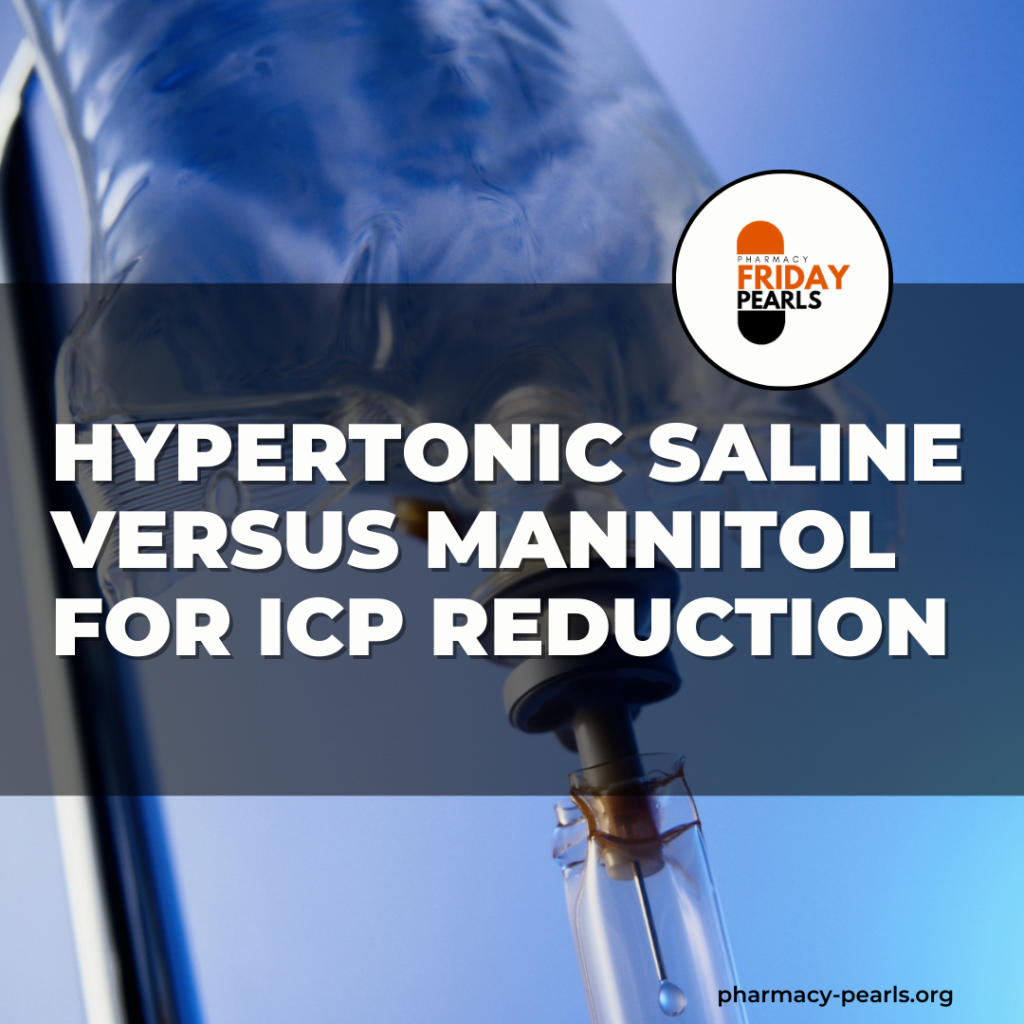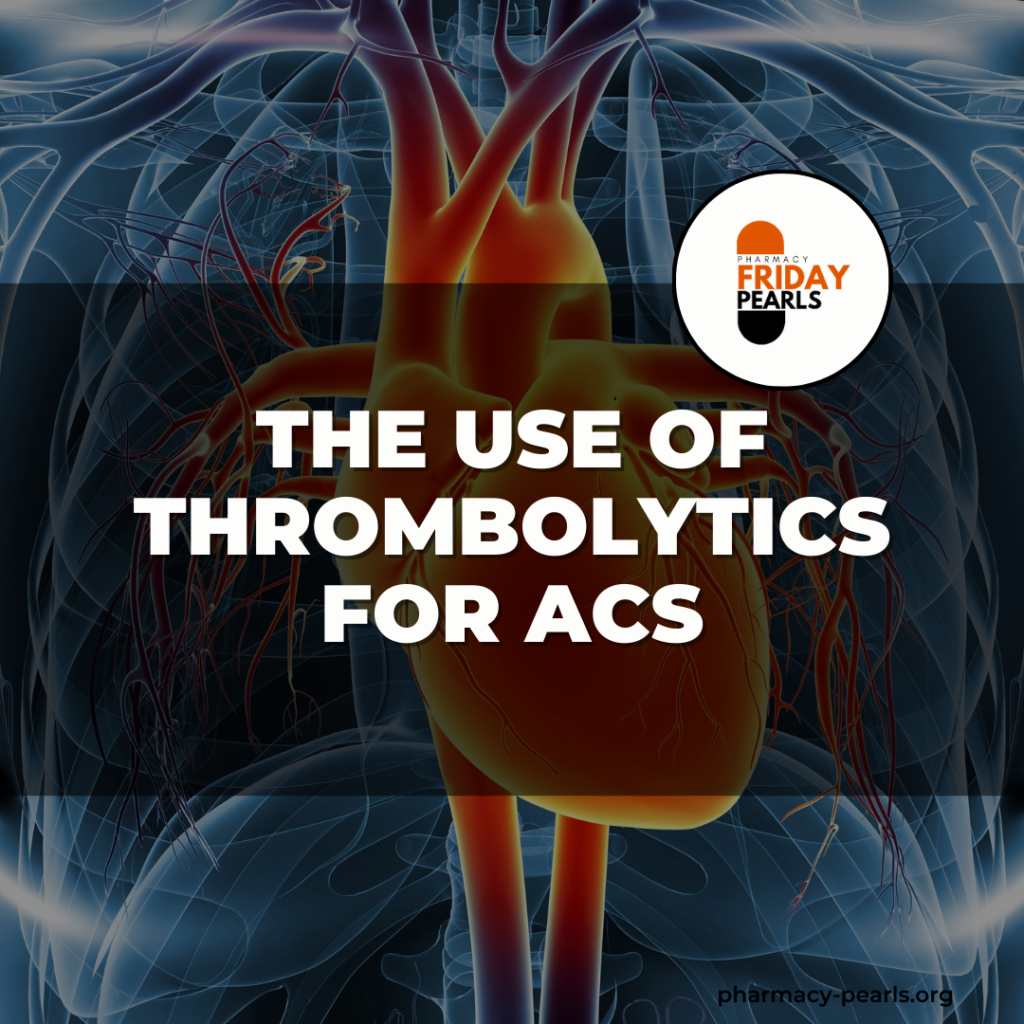Hypertonic Saline Versus Mannitol for ICP Reduction

Introduction
- Elevated intracranial pressure (ICP) is caused by excess volume in the cerebral spaces, which causes a reduction in the cerebral perfusion pressure and affects blood flow and oxygenation to the brain.
- Hyperosmolar agents (hypertonic saline and mannitol) are utilized to form a gradient across the blood-brain barrier to draw fluid from the cerebral space into the vasculature, thus reducing ICP
- Mannitol was previously considered the gold standard of osmotic therapy, but hypertonic saline has proven to be at least as effective as mannitol at reducing ICP
Pharmacology
| Hypertonic Saline | Mannitol | |
| Mechanism | Increases serum sodium levels, making it more hypertonic. Giving a bolus causes a gradient for water to follow sodium extracellularly and move out of the cerebral spaces into the vasculature, while a continuous infusion aids in resuscitation | Osmotic diuretic by increasing the osmolality of the glomerular filtrate, thus blocking reabsorption of water and excretion of sodium. This leads to movement of water to extracellular and vascular spaces and reducing the ICP |
| Dose | 3 – 23.4% available 3%: optimal dose is unclear, reasonable to start with 300-500mL bolus or continuous infusion at 100mL/hr and titrate per response 23.4% : 0.43-0.5 mL/kg IV bolus, max 30mL/dose | 5 – 25% solutions available (20% most common) 0.25 – 1g/kg/dose IV bolus q 6-8 hours (Usually 25-100g per dose) |
| Administration | 3% intermittent bolus or continuous infusion *strong osmotic gradient not retained with continuous infusions 23.4% intermittent bolus over 15 minutes | Intermittent IV infusion over 30 minutes |
| Adverse Effects | Hypervolemia, respiratory distress, electrolyte imbalances (hypernatremia) | Hypotension, hypovolemia, AKI, electrolyte disturbances (specifically K+), extravasation |
| Cautions/Pearls | Solutions > 3-5% require a central line | Requires in-line filter due to risk of crystallization Avoid in hypovolemia and anuria |
| Patient population to consider use in | Hypovolemic, hypotensive, traumatic resuscitation | Euvolemia, hypertensive, fluid restrictions |
| Monitoring | Serum sodium 145-155mEq/dL Serum osmolality 300-320 mOsm/L Titrate based on ICP | Serum osmolality 300-320 mOsm/L Titrated based on ICP |
| Where to find in GHS | 3% Sodium chloride – 500mL EDZONE2, EDZONE3, ALL TRAUMA STATIONS | 20% Mannitol – 500ML EDZONE2, EDZONE3, TRAUMA-M, EDETENTION |
Considerations for Administration
| 3% Sodium Chloride | 23.4% Sodium Chloride | 20% Mannitol | |
| Vascular Access | Peripheral or central | Central ONLY | Peripheral or central |
| Volume (per dose) | 500mL + | ~30 mL | 125 – 500 mL(20%) |
| Equipment | Bolus: Infusion by gravity Continuous: IV infusion pump | Syringe pump preferred | IV infusion pump |
Overview of Evidence
| Author, year | Design/ sample size | Intervention & Comparison | Outcome |
| A. Kerwin, 2009 | Retrospective analysis, (22 patients) | HTS vs mannitol mean ICP reduction in patients with TBI | HTS is as efficacious as mannitol, if not more so, and adds to the growing literature suggesting that HTS is an effective modality for the control of elevated ICP in patients with severe TBI |
| M. Li, 2015 | Meta-Analysis, 7 studies (169 patients) | HTS vs mannitol in mean ICP reduction in patients with TBI | HTS reduces ICP more effectively than mannitol in the setting of TBI |
| S. Burgess, 2016 | Meta-Analysis, 7 trials (191 patients) | HTS vs mannitol in mean ICP reduction, risk of ICP treatment failure, mortality rates, and neurological outcomes | No statistical difference in mortality and neurological outcomes. No difference in mean reduced ICP; decreased risk of ICP treatment failure with HTS |
| E. Berger- Pelleiter, 2016 | Meta-Analysis, 11 studies (1,820 patients) | HTS vs mannitol in reduction of mortality, ICP, and increasing functional outcomes | No significant reduction in mortality, no significant reduction in mean ICP, no significant difference in functional outcomes |
| C. Pasarikovski, 2017 | Systematic Review, 5 studies (175 patients) | HTS vs mannitol in ICP reduction in aneurysmal subarachnoid hemorrhage | No difference between mannitol and 3% HTS in reducing ICP in patients with aneurysmal subarachnoid hemorrhage |
| J. Gu, 2018 | Mata-Analysis, 12 RCTs, (438 patients) | HTS vs mannitol in ICP reduction, ICP control, changes in serum sodium and osmolality, mortality, neurological function outcome | No difference in mean ICP reduction, neurological function, and mortality. HTS may be preferred in TBI patients with refractory intracranial hypertension |
References
- Burgess S, et al. Annals of pharmacotherapy. 2016;50(4):291-300.
- Li M, et al. Y, 2015. Medicine. 2015;9(4):17.
- Dastur C, et al. Stroke and vascular neurology. 2017;2:21-29.
- Kerwin A, et al. J Trauma. 2009;67:277-282.
- Pasarikovski C, et al. World Neurosurg. 2017;105:1-6.
- Gu J, et al. Neurosurg Rev. 2018;42:499.
- Berger-Pelleiter E, et al. CJEM. 2016;18:112–120.
- Farrokh S, et al. Curr opin crit care. 20119; 25:105-109.
- Witherspoon B, et al. Nurs Clin N Am. 2017;52:249-60.
- Micromedex [Electronic].Greenwood Village, CO: Truven Health Analytics. Retrieved August 12, 2019 from http://www.micromedexsolutions.com


Responses